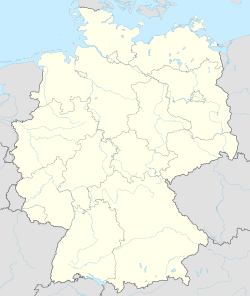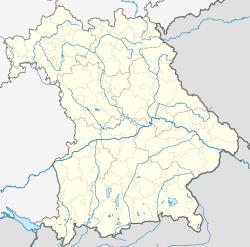Oberviechtach | |
|---|---|
 Aerial view | |
| Coordinates: 49°27′N 12°25′E / 49.450°N 12.417°E | |
| Country | Germany |
| State | Bavaria |
| Admin. region | Oberpfalz |
| District | Schwandorf |
| Government | |
| • Mayor | Rudolf Teplitzky Jr. (Ind.) |
| Area | |
| • Total | 62.41 km2 (24.10 sq mi) |
| Elevation | 50 m (160 ft) |
| Population (2019-12-31)[1] | |
| • Total | 5,051 |
| • Density | 81/km2 (210/sq mi) |
| Time zone | UTC+01:00 (CET) |
| • Summer (DST) | UTC+02:00 (CEST) |
| Postal codes | 92526 |
| Dialling codes | 0 96 71 |
| Vehicle registration | SAD, BUL, NAB, NEN, OVI, ROD |
| Website | www |
Oberviechtach (German: [oːbɐˈfiːçtax] ) is a town in the district of Schwandorf, in Bavaria, Germany. It is situated 31 km (19 mi) southeast of Weiden in der Oberpfalz, and 27 km (17 mi) northeast of Schwandorf. It is famous for being the birthplace of Johann Andreas Eisenbarth. The name comes from pine (Fichte) which is also represented on the coat of arms of the town.
Oberviechtach was chartered and given market rights by Count Palatine Rudolf II and Ruprecht I on May 5, 1337.[2][3]
References
- ^ "Tabellenblatt "Daten 2", Statistischer Bericht A1200C 202041 Einwohnerzahlen der Gemeinden, Kreise und Regierungsbezirke". Bayerisches Landesamt für Statistik und Datenverarbeitung (in German). July 2020.
- ^ Columbia-Lippincott Gazetteer. 1952 Edition. p. 1362.
- ^ "Geschichte". oberviechtach.de. Retrieved 2019-12-18.



